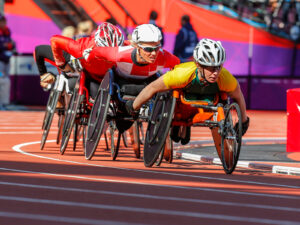
Top-level sport in the armed forces
The Swiss Armed Forces have been deliberately cultivating the sporting skills of talented recruits for 20 years. Despite encountering initial opposition, the programme has achieved impressive results, including Olympic medals and World Cup winners.
Both sides of the political spectrum were united in their opposition to “public sector jobs for athletes”

Elite sport in the armed forces impacted by “unsuitable” professional athletes

Switzerland unearths another ace skier

The programme has an impressive track record

Swiss Sports History

This text was produced in collaboration with Swiss Sports History, the portal for the history of sports in Switzerland. The portal focuses on education in schools and information for the media, researchers and the general public. Find out more at sportshistory.ch



